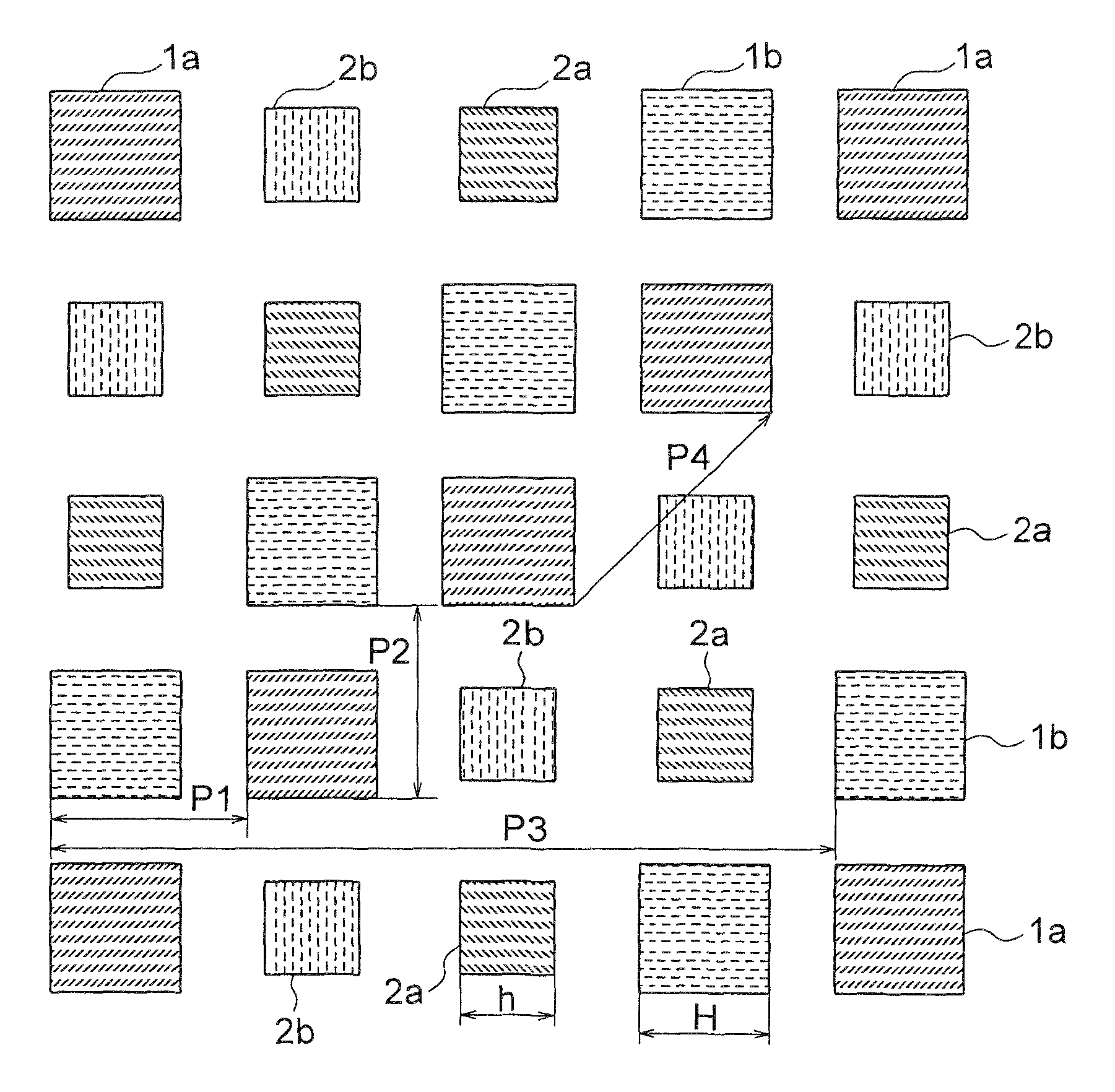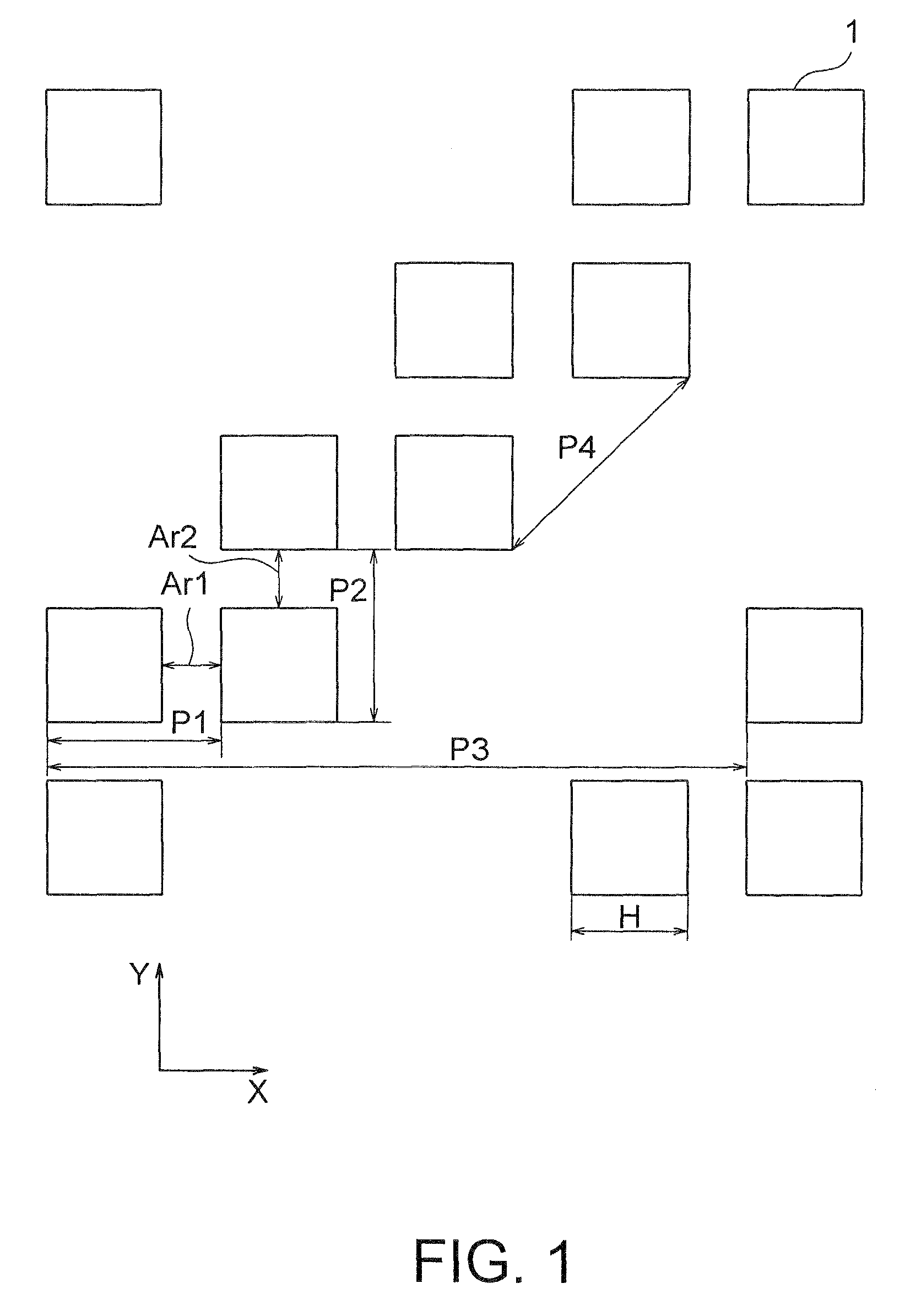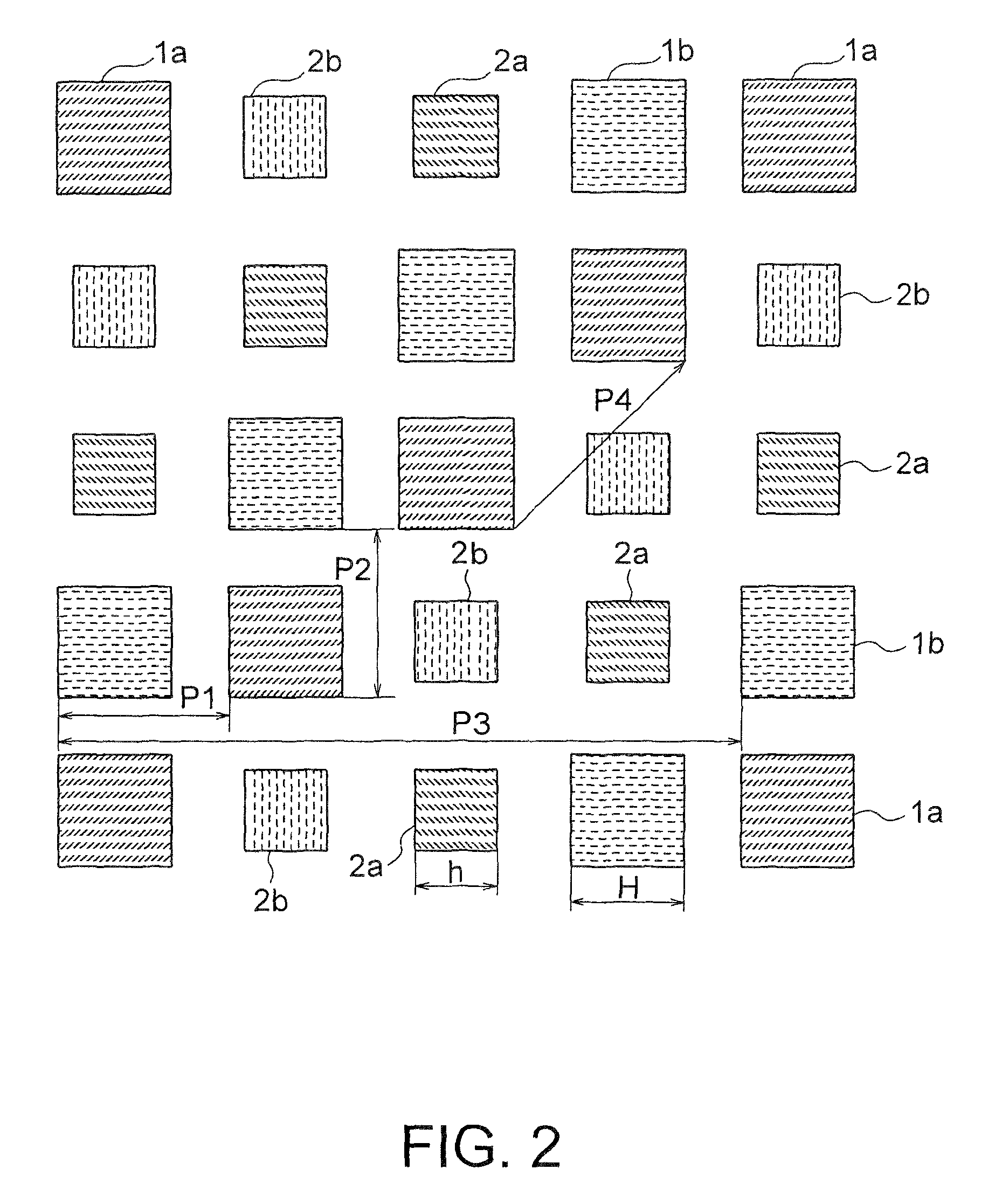Pattern forming method and mask
a pattern and mask technology, applied in the field of pattern forming methods and masks, can solve the problems of pattern transfer onto a wafer that is largely deformed depending, patterns cannot be separated, and patterns cannot be transferred to a wafer
- Summary
- Abstract
- Description
- Claims
- Application Information
AI Technical Summary
Benefits of technology
Problems solved by technology
Method used
Image
Examples
third embodiment
[0038]FIG. 12 is a plan view of a mask showing an example of a layout of hole patterns and auxiliary patterns used in a pattern forming method according to this invention;
[0039]FIG. 13 is an A-A line sectional view showing an example of a sectional structure of the mask shown in FIG. 12;
[0040]FIG. 14 is a diagram showing a light intensity distribution obtained when the mask of FIG. 12 and two-point illumination are used; and
[0041]FIGS. 15A to 15C are plan views of the pupil planes showing typical examples of oblique illumination.
DETAILED DESCRIPTION OF PREFERRED EMBODIMENTS
[0042]The invention will be now described herein with reference to illustrative embodiments. Those skilled in the art will recognize that many alternative embodiments can be accomplished using the teachings of the present invention and that the invention is not limited to the embodiments illustrated for explanatory purposes.
first embodiment
[0043]FIG. 1 is a plan view showing a layout of a mask used in a pattern forming method according to this invention.
[0044]In FIG. 1, hole patterns 1 are each, for example, a square pattern and are repeated at a constant pitch in an oblique direction inclined by 45 degrees with respect to the X-direction, and arranged in every two rows. That is, the layout of this mask is an asymmetrical layout. Herein, the layout of the mask is shown as CAD data of the hole patterns 1. Hereinbelow, the pitch represents a magnitude of a vector obtained by resolving a vector, with its initial and terminal points at the centers of two patterns along a direction in which patterns are repeated, in one of the X-direction, the Y-direction, and the oblique direction, for example.
[0045]In the pattern forming method of the first embodiment, using a mask having a Levenson phase shifter formed for the hole patterns 1 arranged in a direction in which the pitch is the smallest, exposure is performed by two-point ...
second embodiment
[0054]FIG. 6 is a plan view showing a layout of a mask used in a pattern forming method according to this invention. The layout of the mask shown in FIG. 6 is an asymmetrical layout in which a pitch P1 of hole patterns 1 adjacent to each other in the X-direction is greater than that in the asymmetrical layout shown in FIG. 1. Specifically, in this layout, the pitch P1 of the adjacent hole patterns 1 in the X-direction is set to 180 nm, while, a pitch P2 of the adjacent hole patterns 1 in the Y-direction is set to 140 nm equal to that in FIG. 1 and a pitch P3 per two rows of the hole patterns 1 is set to 560 nm equal to that in FIG. 1. Herein, the pitch P2 represents a magnitude of a vector C obtained by resolving a vector, with its initial point at the center B of the hole pattern 1b and its terminal point at the center A of the hole pattern 1a in FIG. 6, in the Y-direction. A mask size H of each hole pattern 1 is for forming a hole of 80 nm on a wafer and is set to 90 nm in conside...
PUM
| Property | Measurement | Unit |
|---|---|---|
| size | aaaaa | aaaaa |
| size | aaaaa | aaaaa |
| size | aaaaa | aaaaa |
Abstract
Description
Claims
Application Information
 Login to View More
Login to View More - R&D
- Intellectual Property
- Life Sciences
- Materials
- Tech Scout
- Unparalleled Data Quality
- Higher Quality Content
- 60% Fewer Hallucinations
Browse by: Latest US Patents, China's latest patents, Technical Efficacy Thesaurus, Application Domain, Technology Topic, Popular Technical Reports.
© 2025 PatSnap. All rights reserved.Legal|Privacy policy|Modern Slavery Act Transparency Statement|Sitemap|About US| Contact US: help@patsnap.com



